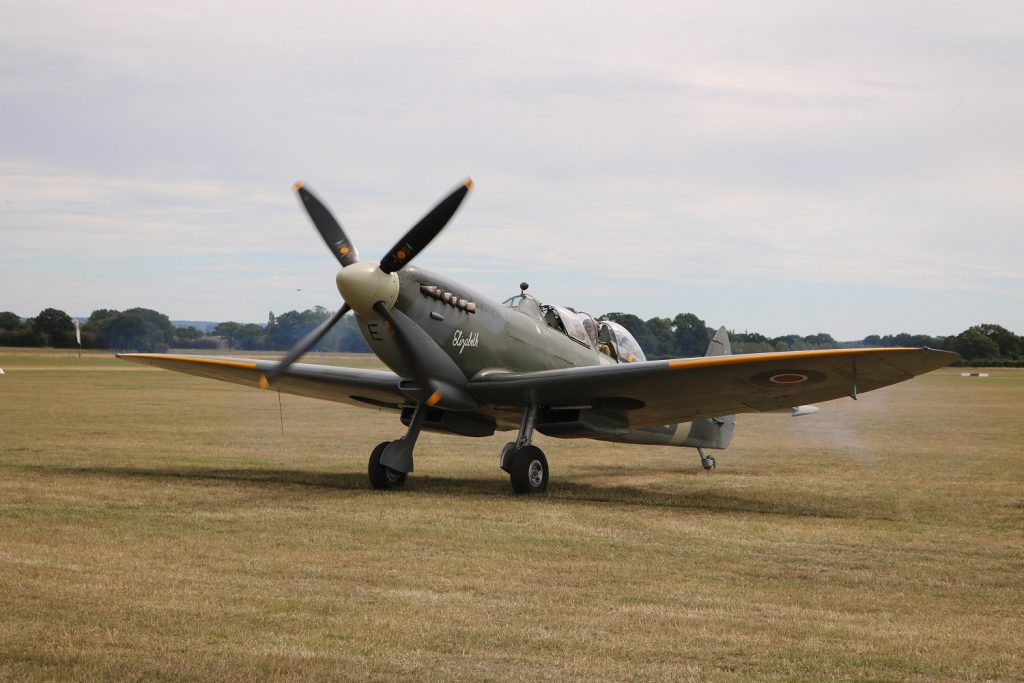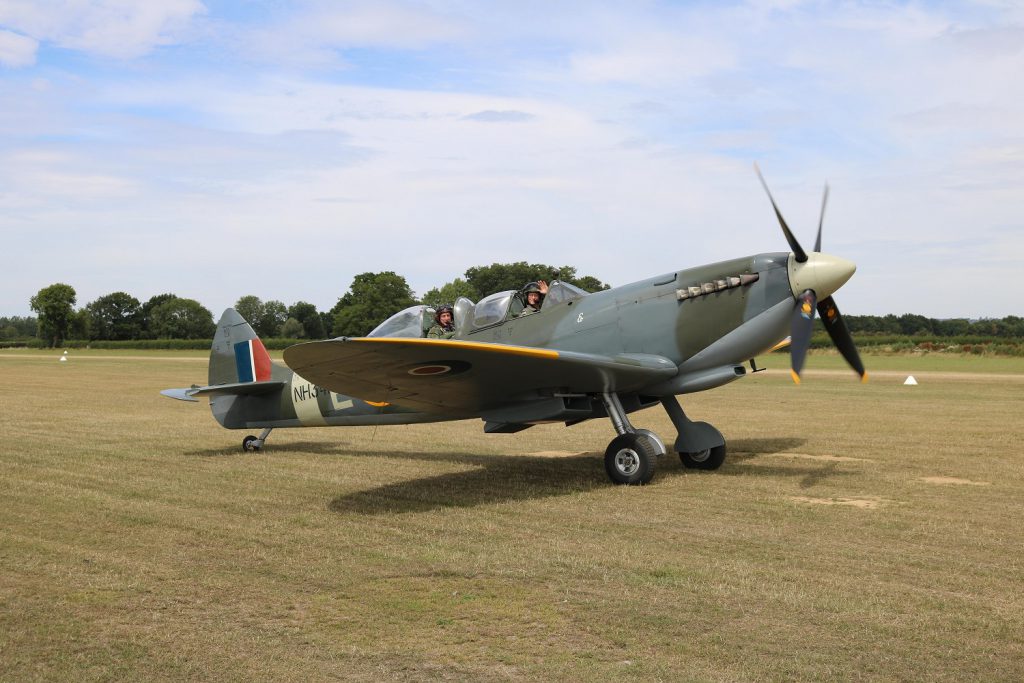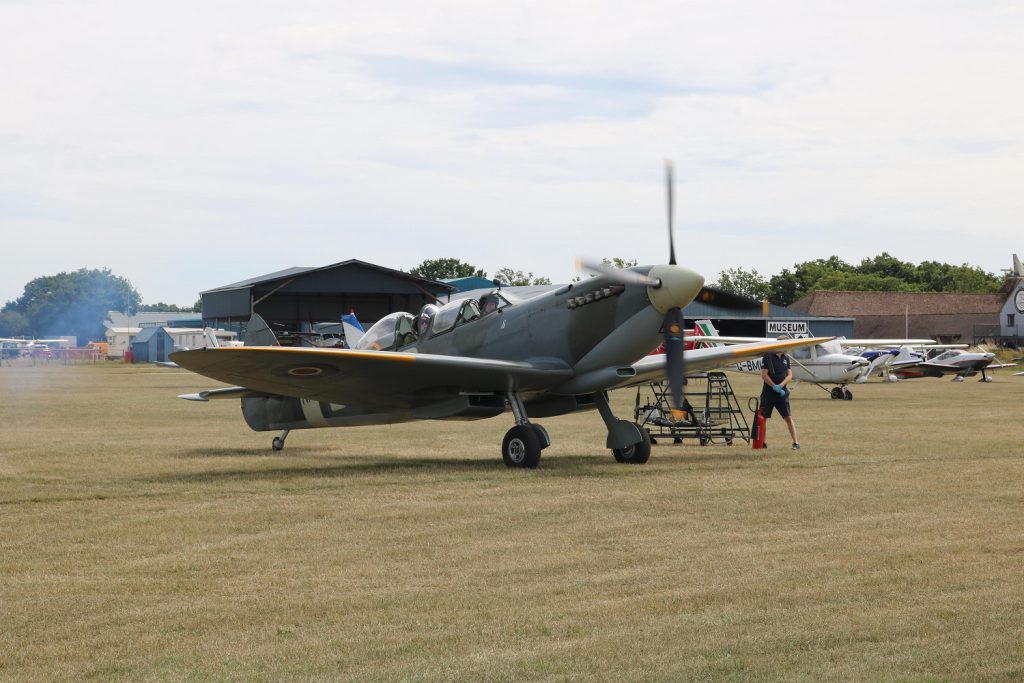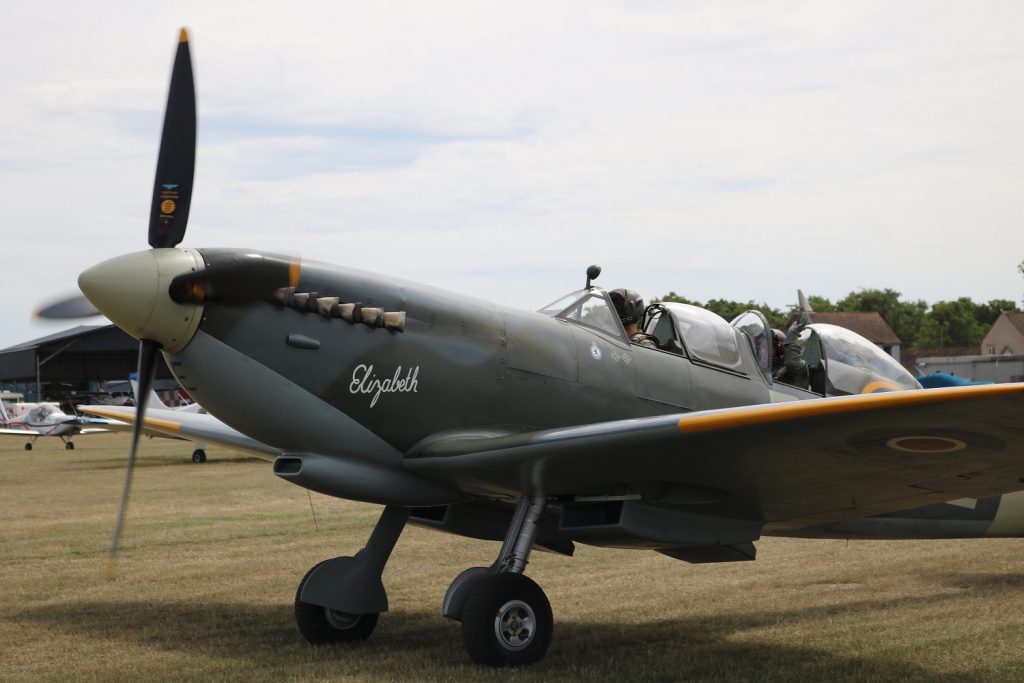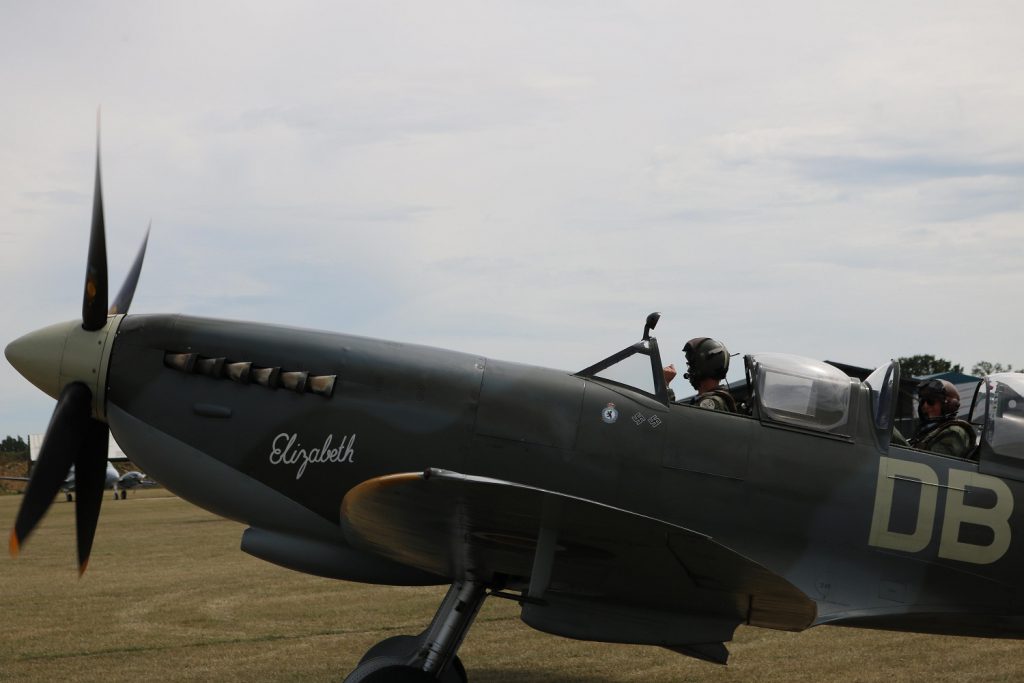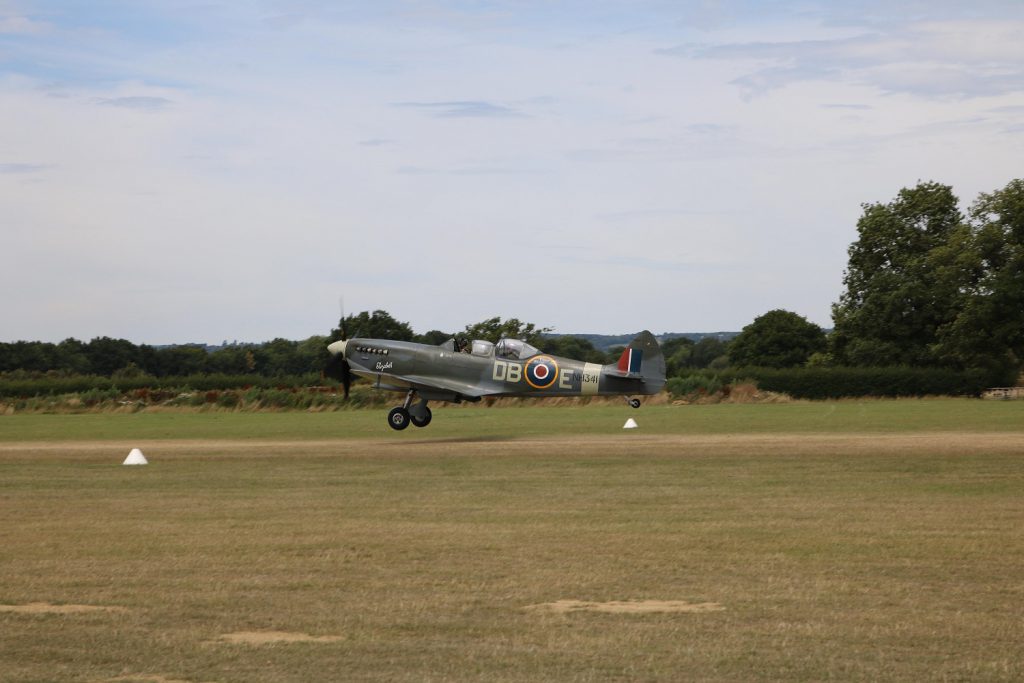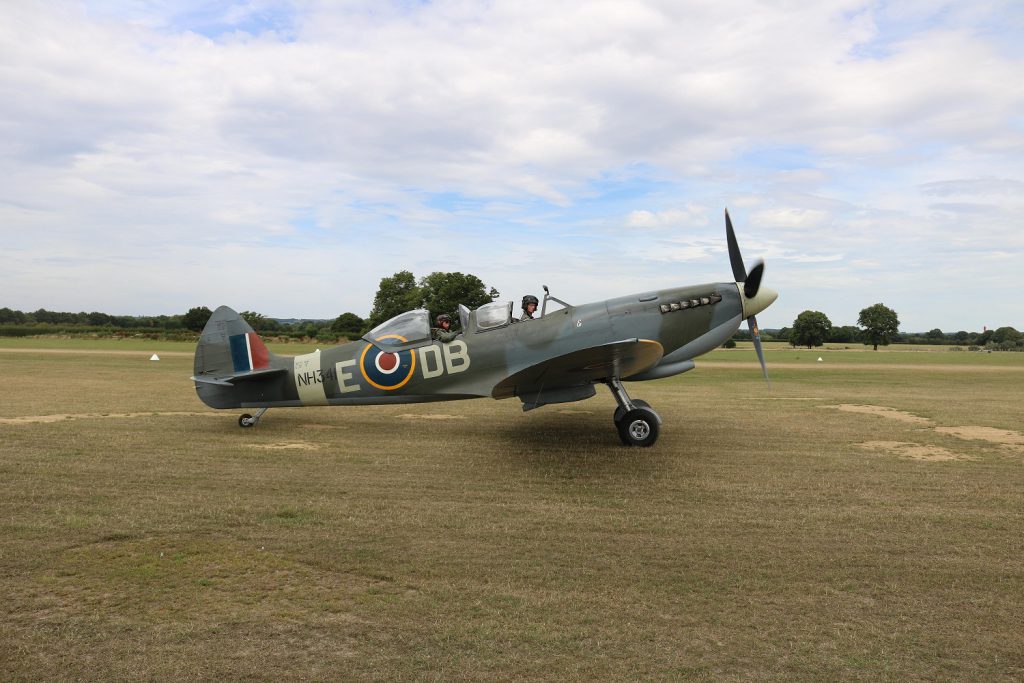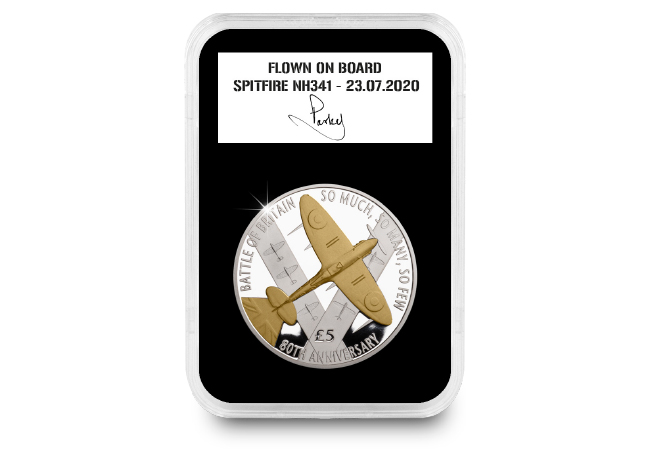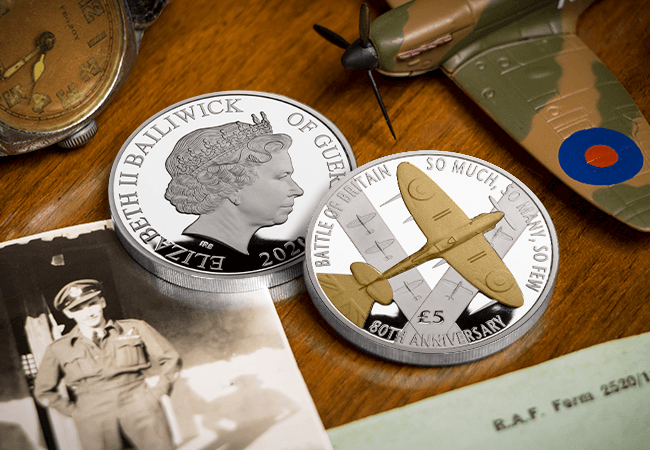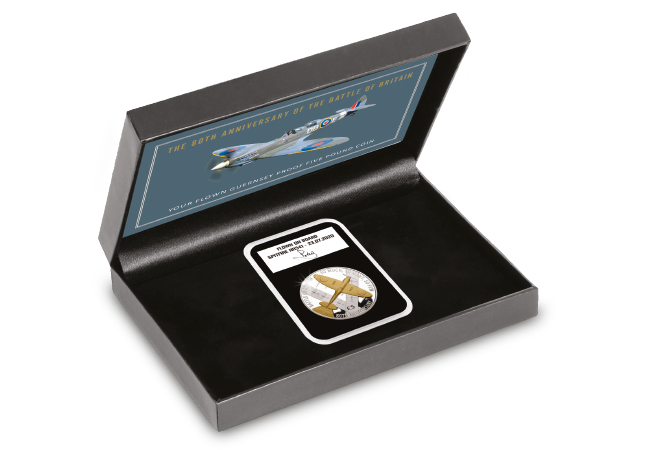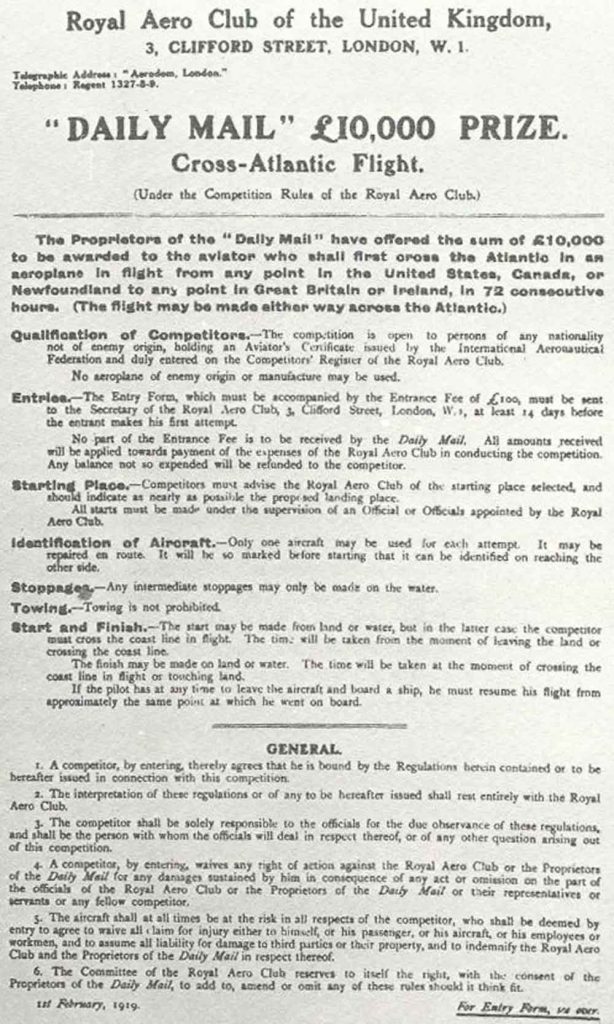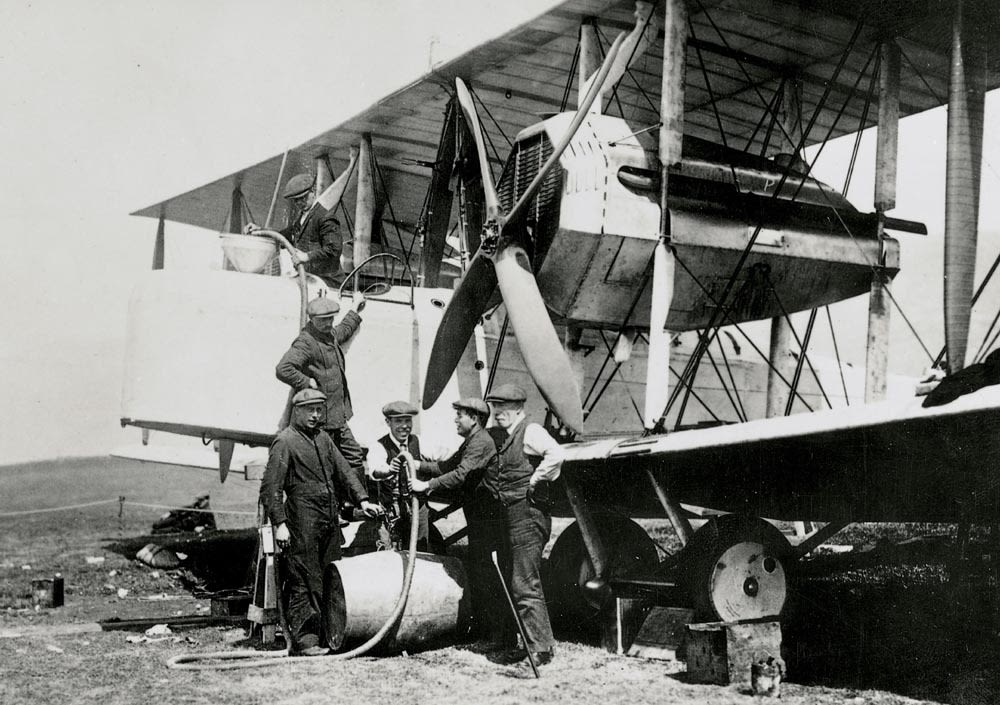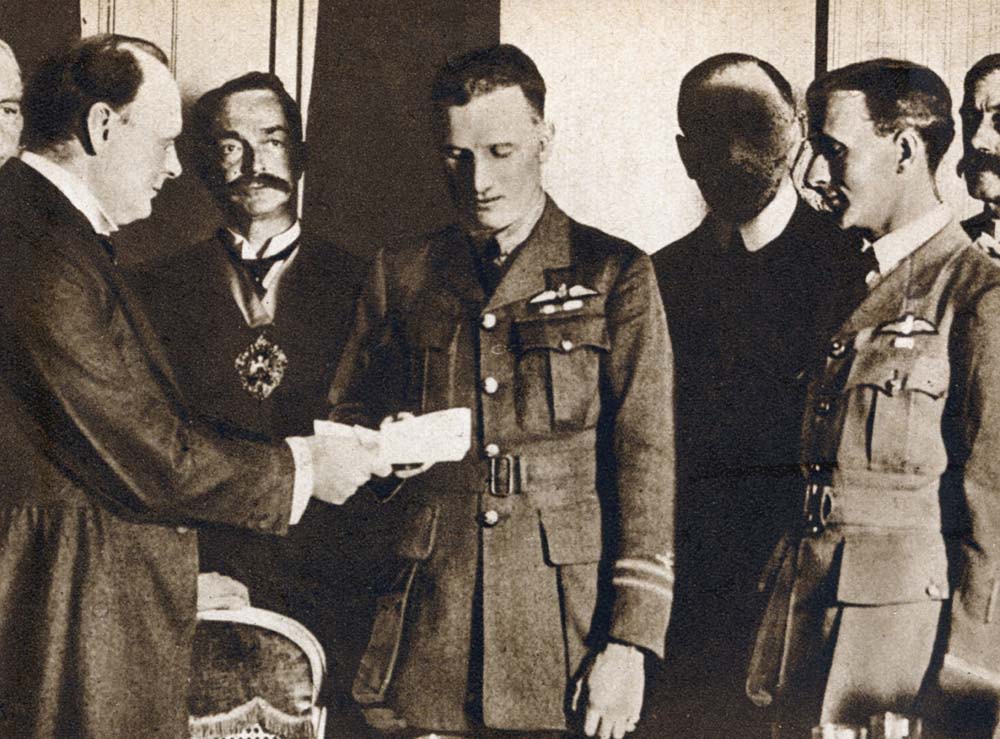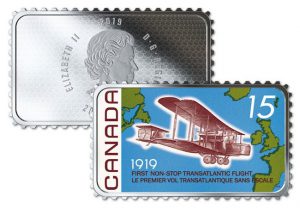Posts Tagged ‘Aviation’
The day we took 1,000 coins into the sky in an original WWII Spitfire…
Last month, I had a fantastic opportunity to get up close and personal to one of the world’s most famous aircraft – the Spitfire!
The iconic Supermarine Spitfire was critical in defeating Luftwaffe air attacks during the Battle of Britain in 1940, and so to mark the 80th anniversary this year, I knew we had to arrange something unique to produce a truly special collectable coin worthy of the historic anniversary.
So on the 23rd July I drove up to the historic Duxford Aerodrome to have 1,000 brand new Proof £5 coins flown in an original WWII Spitfire.
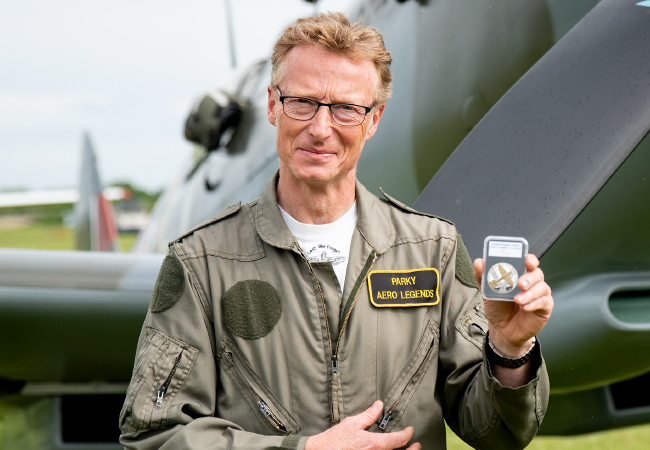
Now the purpose of my visit was to have 1,000 Official Battle of Britain £5 coins flown in an original WWII Spitfire, but I was also able to talk to RAF Flight Lieutenant Antony ‘Parky’ Parkinson in great detail about his time in the RAF and as an ex-Red Arrow ahead of the Battle of Britain anniversary. You can see Parky discussing his career and the Spitfire in the video below…
Before Parky took the ‘NH341’ Spitfire to the air, I helped him secure the 1,000 Battle of Britain Spitfire £5 coins into the wing bays which would have once held the fighter plane’s armaments while defending Britain in the skies 80 years ago. The space in the wing bays is extremely limited, hence the limited number of coins that were able to be taken to the sky.
Standing within a few feet as the famous Rolls Royce engine fired up, I watched in awe as the elegant, agile aircraft taxied along the runaway and gracefully took to the skies.
Although many 80th anniversary plans up and down the country have had to be cancelled, I am delighted to be able to give a limited number of collectors the opportunity to become the proud owner of the BRAND NEW Official Proof £5 coin that has been flown in an original WWII Spitfire plane. But that’s not all, as I was also able to arrange for them to be personally hand-signed by Parky.
The brand new Spitfire £5 coin is a fantastic commemoration of the famous plane and I am grateful that I had the opportunity to mark the 80th anniversary of the Battle of Britain with such a fitting tribute.
So I’m sure you can appreciate what a genuinely rare collectable these will instantly become and demand is expected to exceed availability. If you wish to secure one for your collection, you need to act quickly by clicking here.
Thank you to Flight Lieutenant Antony Parkinson MBE and the rest of the team at Aerolegends for helping to take the Spitfire £5 coins to the sky and for giving me the opportunity to see this famous warbird in the flesh.
If you’re interested, you’ll need to be quick as over 50% have already been reserved. You can secure the Official Battle of Britain Proof £5 coin now for JUST £35 by clicking here >>
And remember, not only will your official Battle of Britain £5 Proof coin have been flown in an original WWII Spitfire, it is also one of just 1,000 coins that have been personally signed by Lieutenant Antony Parkinson ‘Parky’, MBE.
How a £10,000 reward led to one of the greatest advancements in aviation
In the 1800’s, when aeroplanes were a mere twinkle in the eye of ambitious engineers, the idea of transatlantic flight came about with the advent of the hot air balloon. But one crash-landing, and one postponement due to the American Civil War meant this dream had to go back to the drawing board.
On the other side of the pond, in April of 1913 The Daily Mail newspaper offered a cash prize of £10,000 to “the aviator who shall first cross the Atlantic in an aeroplane in flight from any point in the United States of America, Canada or Newfoundland and any point in Great Britain or Ireland in 72 continuous hours”.
But it wasn’t until after the end of WWII that transatlantic flight by aircraft became truly viable, thanks to the significant advancements in aerial capabilities and technology.
Then the competition really heated up…
Nail-biting four-way competition
What came was a nail-biting four-way contest against the clock as well as each other. Four different ‘teams’ formed and went to work to try and prepare their chosen aircraft the fastest, for fear of being pipped to the post by another team making their attempt sooner. To make it a fair contest, each team had to ship their aircraft to Newfoundland for the take-off.

First to try was Australian pilot Harry Hawker and navigator Kenneth Mackenzie Grieve, piloting a Sopwith Atlantic – an experimental British long-range aircraft. In flight the aircraft suffered from engine failure and, when coupled with poor weather conditions, the decision was made to abort the mission.
The aircraft was abandoned in the Atlantic Ocean, 750 miles from Ireland, and the pair were rescued by a Danish steamer SS Mary. Due to the SS Mary not having any radio contact, the pair were presumed dead and King George V sent a telegram of condolence, but luckily this wasn’t the case as the pair arrived back on land nearly a week later.
The next attempt wasn’t nearly as exciting, as the aircraft never left the take-off zone. Frederick Raynham and C. W. F. Morgan made the attempt in a Martinsyde but crashed on take-off due to the heavy fuel load.
Then came the turn of aviator duo, John Alcock and Arthur Brown, who flew straight into the history books on June 15th 1919…
Flying in to the unknown across the Atlantic
The Vickers engineering and aviation firm, which had considered entering its Vickers Vimy IV twin-engine bomber in the competition, appointed Alcock as the team’s pilot along with Brown who was adept at long-distance navigation.

In preparation for the transatlantic flight, The Vimy, powered by two Rolls-Royce Eagle 360 hp engines, was successfully converted, including replacing its bomb racks with extra petrol tanks.
The pair took off from St. John’s, Newfoundland, in their modified bomber around 1:45pm on 14th June 1919. To say it wasn’t an easy flight would be an understatement. They encountered both mechanical and natural challenges. The wind-powered generator failed, depriving them of radio contact and much needed heating in their open-top cockpit. Fog and a snowstorm prevented navigation, almost resulting in a crash-landing at sea, not to mention the snow and freezing conditions meant the engines were in danger of icing up.
Whilst they were set a 72-hour target by The Daily Mail, the duo made landfall in Clifden, County Galway, in Ireland at 8:40am on 15th June 1919 – after just 16 hours of flight!
Incredibly, they landed not far from their intended landing zone in Ireland. However, the aircraft was damaged upon arrival because what looked like a field from their aerial view turned out to be a bog, causing the aircraft to nose-over. Thankfully neither were hurt, and Brown claimed that if the weather had been good, they’d have been able to continue to London.
A hero’s return to a £10,000 reward
Alcock and Brown’s successful attempt meant that the fourth team, Handley Page Limited, who were yet to take-off, were no longer eligible to compete. The two airmen returned home as aviation heroes and pioneers of the sky.
As promised, Alcock and Brown were rewarded for their ground-breaking achievement – the £10,000 prize money offered by The Daily Mail, for the first crossing of the Atlantic in less than 72 consecutive hours.
The Secretary of State for Air at the time, Winston Churchill, presented the pair with their cash reward. Then one week later, at Windsor Castle, they were awarded the honour of Knight Commander of the Most Excellent Order of the British Empire by King George V.
If you’re interested…
The Royal Canadian Mint marked the milestone 100th anniversary of this remarkable achievement and feat of engineering with a limited edition 1oz Silver Proof coin. The coin features a faithful colour reproduction of the commemorative stamp that was issued to mark the 50th anniversary.
Unsurprisingly the coin proved so popular that it is no longer available at the Mint! We have a limited number remaining, click here for more information >>
The day I took 800 coins to the sky in a WWII Spitfire
Last Saturday I had the opportunity to see the RAF’s most famous plane up close and personal. That’s because on the 24th March I drove up to the historic Duxford Aerodrome to have 800 of the brand new Spitfire £2 coins flown in an original WWII Spitfire.
I arrived at 9am but unfortunately the chance of flying was in doubt because of the poor visibility caused by low lying clouds. The rest of the morning was spent nervously looking at the sky waiting for enough visibility for the pilot to safely take the 74 year old warbird into the air.
Our pilot for the day was Flight Lieutenant Anthony Parkinson MBE, known as Parky. The delay caused by the weather gave me the opportunity to talk with Parky about his time in the RAF and how the Spitfire compares to the modern jets he has flown during his time with the RAF. You can see Parky discussing his career and the Spitfire in the video below.
The wait for take-off also gave me the opportunity to sit in the cockpit of the famous fighter plane and experience some of what it would have been like for the young pilots who sat in the same cockpit to defend Britain in the skies over 70 years ago.
Finally at 2.00pm the cloud cleared enough for a small pocket of visibility to take the Spitfire into the air. We quickly pushed the Spitfire out of the hanger and Parky secured the 800 Spitfire £2 coins into the wing bays which would have once held the plane’s armaments.
At 2.20 Parky prepared the plane for take-off. Standing a few yards from the plane whilst it’s famous Rolls Royce engine fired up was brilliant, and the Spitfire TD314 drew in a crowd nearby while it taxied along the runway.
Parky swiftly took the famous plane into the sky and gave me and the rest of the crowd a fly by. Despite the cloud cover it was still fantastic to see the Spitfire race through the sky at the hands of a former Red Arrows display pilot.
The brand new Spitfire £2 coin is a fantastic commemoration of the famous plane and I am grateful that I had the opportunity to mark the 100th anniversary of the RAF with such a fitting tribute.
Thank you to Ben Perkins, Flight Lieutenant Anthony Parkinson MBE and the rest of the team at Aerolegends for helping to take the Spitfire £2 coins to the sky and for giving me the opportunity to see this famous warbird in the flesh.
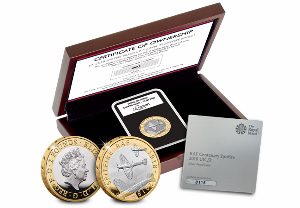
Signed edition Silver Proof £2 Spitfire coin.
If you’re interested
All 800 coins have now been sold. However, we will soon be flying the 4 times as limited ‘signed edition’ Silver Proof £2. Click here to pre-reserve yours now >>

